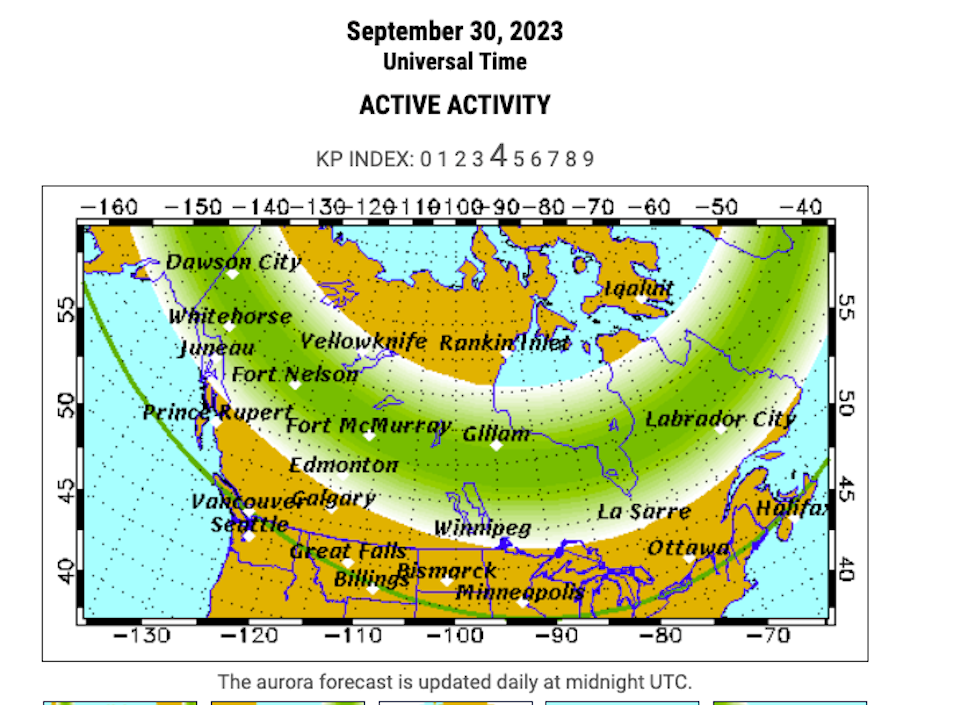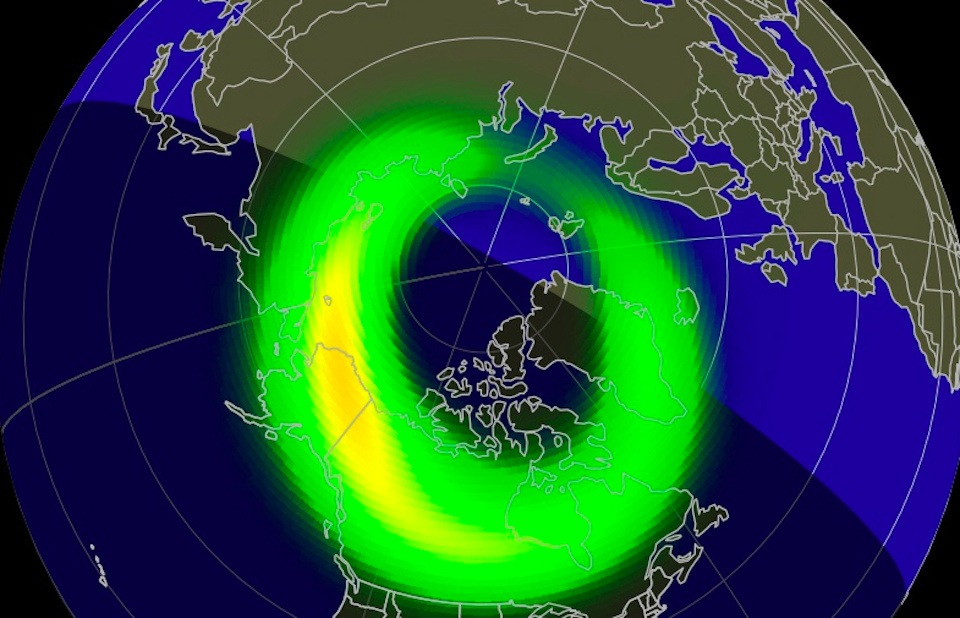The Vancouver weather forecast includes clear skies and the possibility of one of Mother Nature's most awe-inspiring displays: the northern lights.
The National Oceanic and Atmospheric Administration (NOAA)'s Space Weather Prediction Center does not have a geomagnetic storm warning in effect. However, There was some stormy space weather earlier this week.
On Tuesday, Sept. 26, the Space Prediction Center observed a "strong geomagnetic storm" following the arrival of a coronal mass ejection from the sun.
According to the University of Alaska Fairbanks (UAF), it may be possible to view active auroral displays overhead on Saturday "from Inuvik, Yellowknife, Rankin and Iqaluit to Juneau, Edmonton, Winnipeg, and Sept-Iles," and then "low on the horizon from Vancouver, Great Falls, Pierre, Madison, Lansing, Ottawa, Portland, and St. Johns.
The university's online aurora monitor map shows what regions the aurora's green glow will likely reach, as well as other areas where there is less of a possibility. Additionally, there is a brief description below the map of the aurora activity on that particular day. You can switch to other days to see the forecast, too.

Metro Vancouver weather forecast
A ridge of high pressure will likely keep conditions dry over the weekend in Metro Vancouver. However, wet weather is expected to make its way into the region starting Monday.
V.I.A.'s Downtown Centre Weatherhood station shows clear skies and bright sunshine on Saturday, which will offer the ideal background for potential aurora gazing. You can look at the specific forecast information on Weatherhood for neighbourhoods across the Metro Vancouver region to find out what spots will offer ideal viewing conditions.
Light pollution in large cities makes the aurora borealis difficult to observe, but not impossible, given the right circumstances. But your best bet for viewing that hypnotic green glow is up north or outside of the city.
When you do spot the northern lights, they likely won't appear green or any other colour. Instead, you'll see the arcing, milky manifestation moving in the sky. In order to capture that green glow, you'll need to use a camera with a longer exposure.
Find out more northern lights information and viewing tips with our comprehensive guide.



